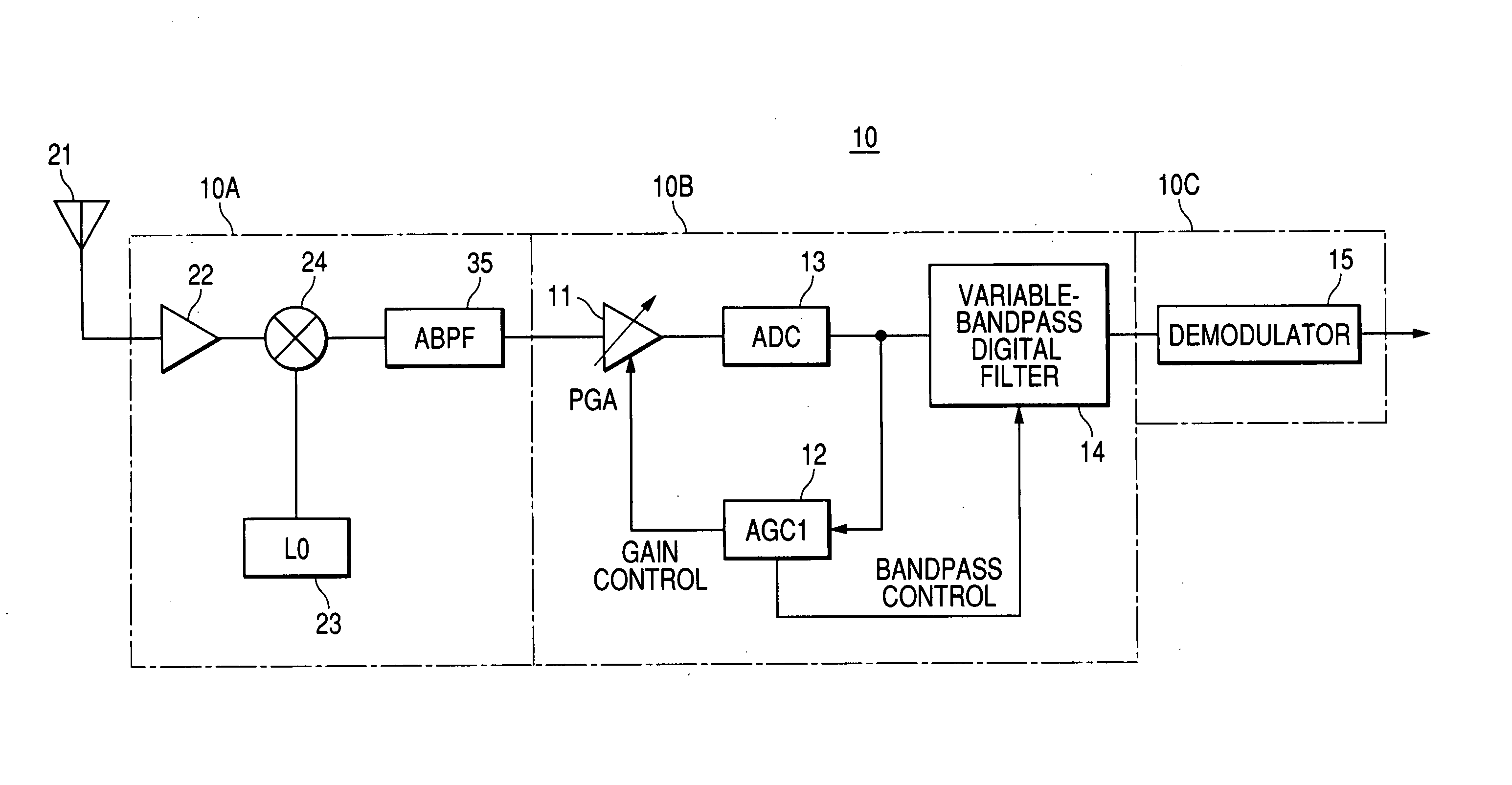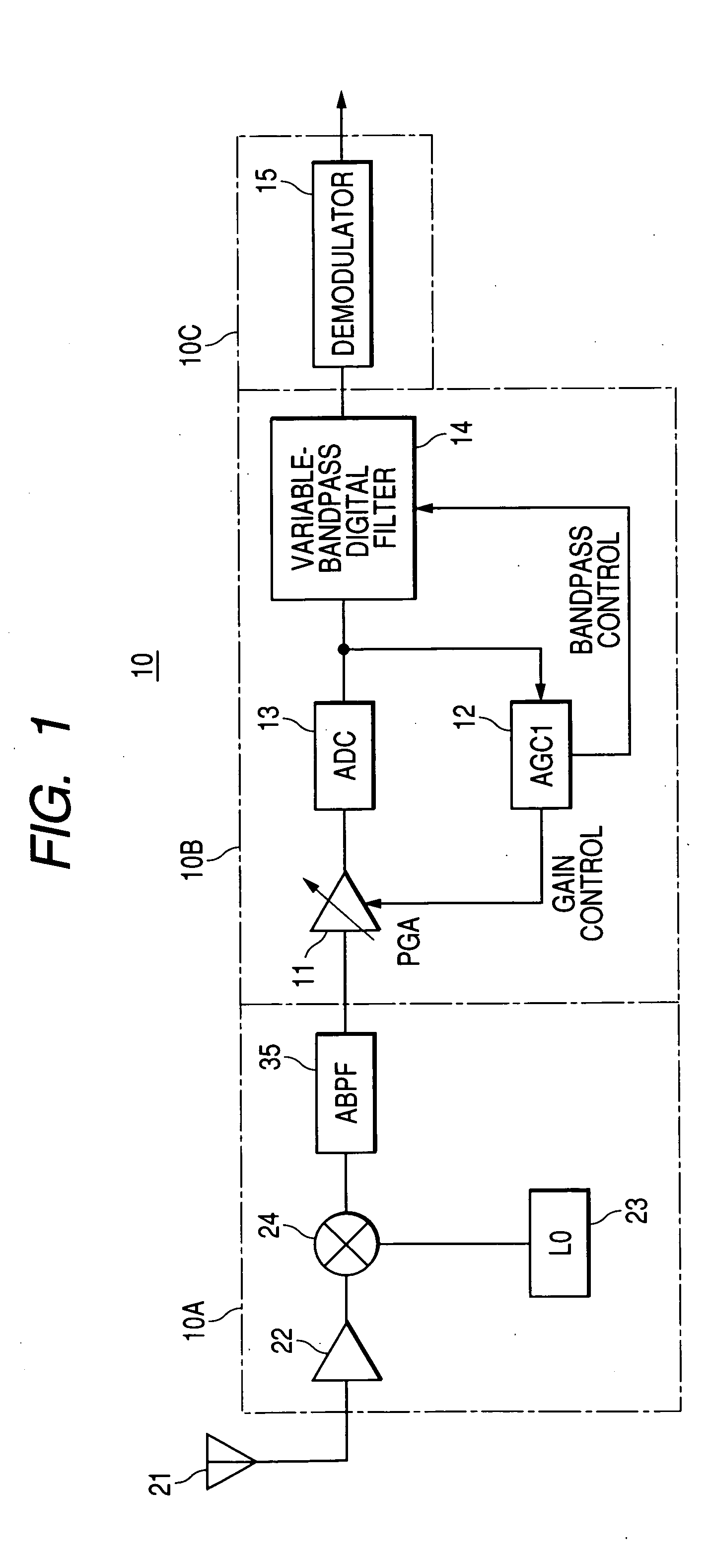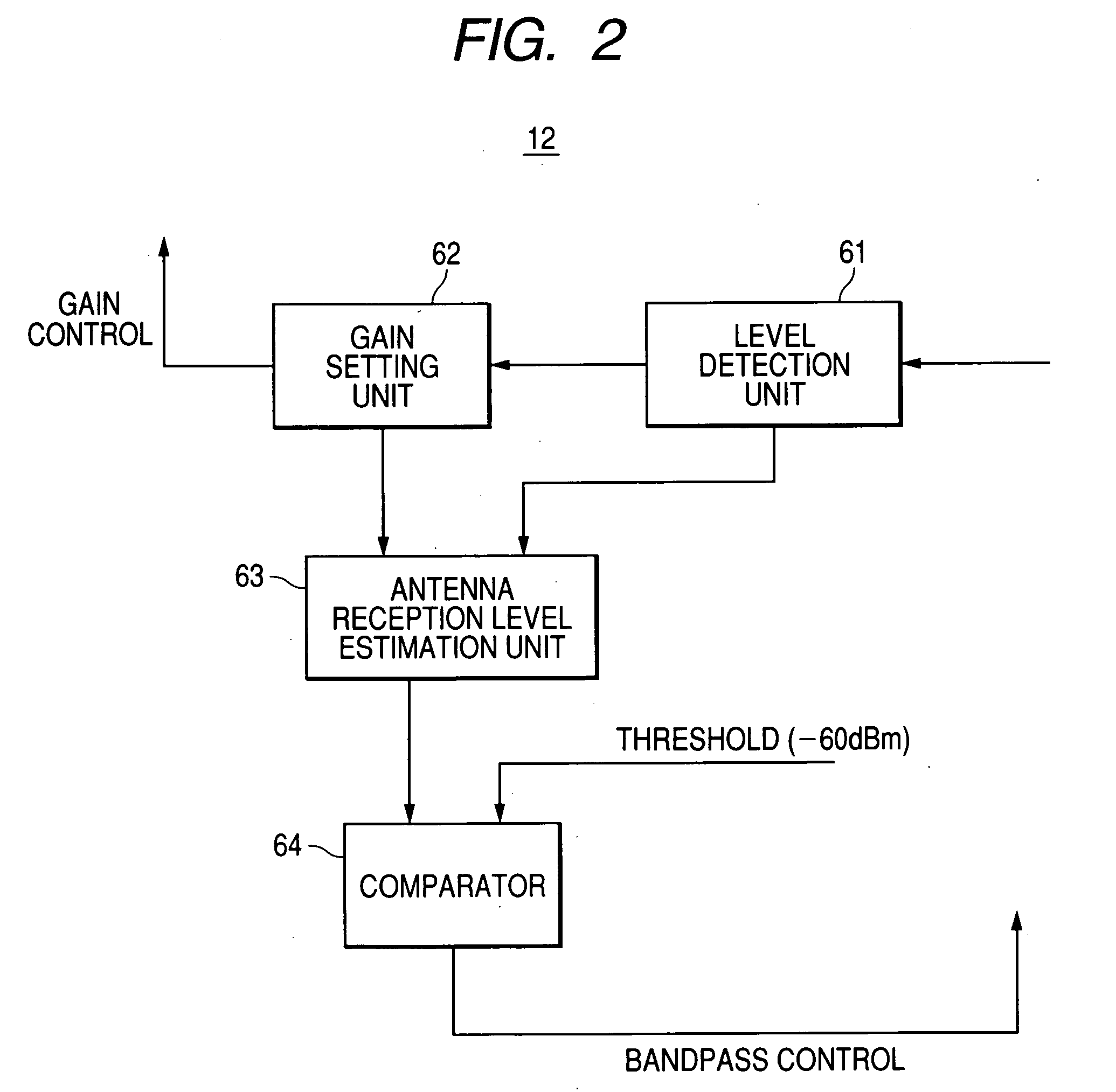Filter control method, signal processing circuit and integrated circuit for wireless receiver
a filter and signal processing circuit technology, applied in electrical equipment, digital transmission, transmission monitoring, etc., can solve the problems of modulated data, deterioration of modulated data, and increase the bit error rate, so as to satisfy the sensitivity and interference wave resistance of the receiver and the effect of low cos
- Summary
- Abstract
- Description
- Claims
- Application Information
AI Technical Summary
Benefits of technology
Problems solved by technology
Method used
Image
Examples
first embodiment
[0030]FIG. 1 is a block diagram showing a circuit configuration of a wireless receiver having a Low-IF architecture according to the present invention. This embodiment exemplifies a case in which an IC for wireless receiver having a variable-bandpass filter configured as a digital filter is applied to a transceiver. A circuit unit of the wireless receiver comprises a high-frequency signal processing unit 1A, a low-frequency signal processing unit 10B and a demodulation unit 10C. A high-frequency signal received by an antenna 21 is amplified by a low noise amplifier 22 in the high-frequency signal processing unit 10A, and then mixed with a reference wave from a local oscillator circuit (LO) 23 by a mixer 24 so as to be converted to a low-frequency signal. The low-frequency signal is supplied to a programmable gain amplifier (PGA) 11 in the low-frequency signal processing unit 10B through an analog filter (ABPF) 35.
[0031] A gain is set to the PGA 11 by a gain control signal from an au...
second embodiment
[0051] Next, the present invention will be described with reference to FIGS. 7 to 10. In FIG. 7, a circuit unit of a wireless receiver comprises a high-frequency signal processing unit 10A, a low-frequency signal processing unit 10B and a demodulation unit 10C. PGAs 81, 83 of the low-frequency signal processing unit 10B amplify the input signal by a gain that is set by an AGC2 85. A variable-bandpass analog filter 82 serves to suppress interference wave components included in the output signal from the PGA1 81, and the passband or the amount of suppression is controlled by the AGC2 85. Further, an ADC 84 converts the output signal from the PGA2 83 into a binary value.
[0052] Here, the PGA1 81 is installed in order to reduce a relatively large noise that is generated by the variable-bandpass analog filter 82. The PGA2 83 serves to adjust the amplitude level of the signal so as to be equal to the input dynamic range of the ADC 84.
[0053] The signal output from the PGA2 83 is converted ...
PUM
 Login to View More
Login to View More Abstract
Description
Claims
Application Information
 Login to View More
Login to View More - R&D
- Intellectual Property
- Life Sciences
- Materials
- Tech Scout
- Unparalleled Data Quality
- Higher Quality Content
- 60% Fewer Hallucinations
Browse by: Latest US Patents, China's latest patents, Technical Efficacy Thesaurus, Application Domain, Technology Topic, Popular Technical Reports.
© 2025 PatSnap. All rights reserved.Legal|Privacy policy|Modern Slavery Act Transparency Statement|Sitemap|About US| Contact US: help@patsnap.com



